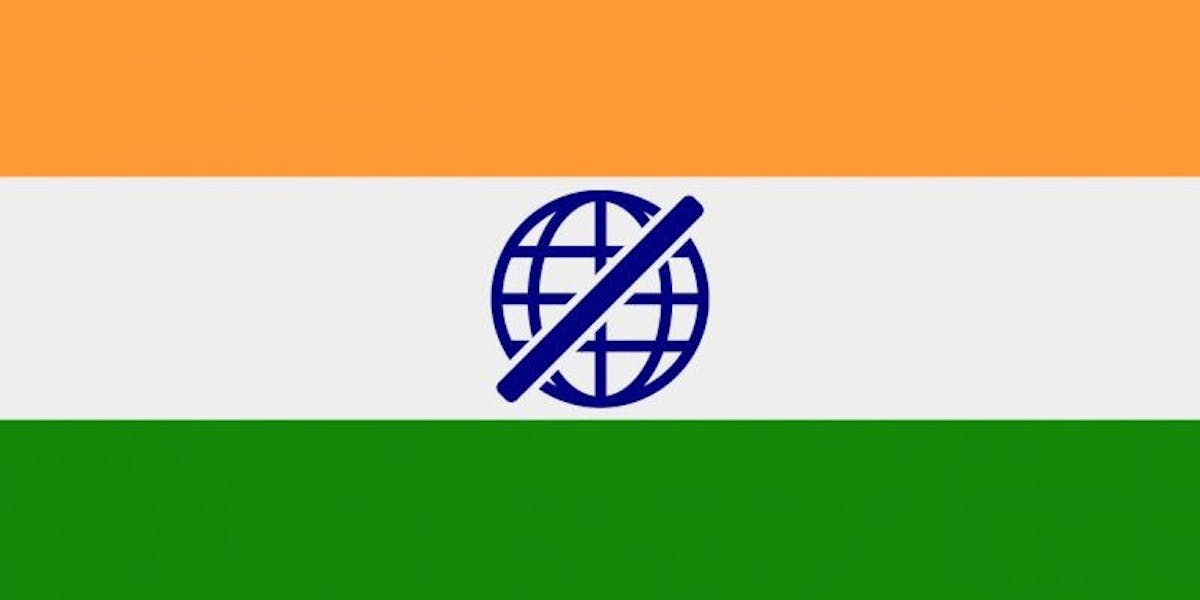
Author
Yasholekha Rajasekhar
Yash can often be found at the crossroads of science and art.

The Internet has become the primary source of information for a large share of the population. It has intertwined with our lives so much that living without feels like a nightmare. An Internet shutdown is the absolute restriction or intentional disruption by the government to make the internet or electronic communication services unavailable for a specific geographical area or population so as to exert control over the flow of information. There is no wonder to it being referred to as ‘internet kill switch’ as it essentially cripples the passing of news and information. Internet shutdown occurs when a single control is created and is given the authority to stop all the internet services that are provided by the telecom companies, in times of emergencies. According to Public emergency or safety rules-2017, the Government of India is allowed to sanction an Internet shutdown in case of a public emergency through a temporary suspension of the telecom services.
Initially, Internet shutdown was brought in order to prevent the spreading of fake news during a public protest, to suppress civil unrest during uncontrollable situations, to block the spread of critical government decisions or to prevent the communication between illegal or criminal organisations during times of emergencies. Internet shutdowns are a powerful means of control but if not used in a correct intention by the government or if implemented with lack of safeguards, it may be misused.
In recent years, the highest number of internet shutdowns in the world have took place in India. According to a BBC report , India has witnessed the highest number of internet shutdowns in the world so far this year. Referring to India as “THE GLOBAL CAPITAL OF INTERNET SHUTDOWNS” is no exaggeration.
The sparks of Internet shutdown first erupted in Kashmir, wiping out communication from the entire face of the state. Kashmir has been without Internet since the announcement of the scraping of the Article 370 and Article 35a by the Union Government. Though the Government has claimed that it was an initiative to maintain peace and to impose security measures , four months of denied access to Internet has completely crippled the normal functioning of the people of Kashmir, leaving them voiceless. The whole population i.e around 8 million has been pushed into a black-hole and nobody knows what is happening there. This is a terrible scenario for the journalists who have no means of reporting the current condition of the state and its people. Kashmir has also experienced the longest Internet shutdown in a democratic country, according to the Washington post. Rajasthan precedes Kashmir in the highest number of Internet shutdowns. There has been more than 100 internet shutdowns in India in the year 2019 and the majority shutdowns have been in the northern states.
In the midst of anti-CAB protests, Assam faced a complete black-out of the Internet for ten days which has now been resumed after orders from the Guwahati High Court to restart the internet services. In Delhi, there has been Internet throttling since the Anti-CAB protests started.
According to the internet shutdown tracker, the month of December saw multiple internet shutdowns in West Bengal, UP, Meghalaya, Assam and many other places in North India. Tripura and Arunachal Pradesh saw Internet gags. In Tamil Nadu, Internet shutdown took place during the Anti-Sterlite struggle.
The negative impact of Internet shutdowns is not only the hindering of communication. This has a huge impact on the economy. Cashless payment cannot be done in times of blackouts which affects the local vendors when it comes to dealing with huge amounts of money. Internet outage also limits the artists who are mainly dependent on platforms like YouTube, Instagram etc. Education is affected too to some extent since online education platforms like Coursera, Udemy, edX are out of reach. National and State level examinations can not be conducted and above all, people struggle to find help in times of emergencies. In a sense, the entire place gets isolated from the rest of the world when an Internet blackout is imposed over the region. A report by the Indian Council for Research on International Economic Relations (ICRIER) states a loss of US $3.08 Billion to the Indian economy during the period 2012–2017 due to various blackouts.
In India, Internet shutdown is definitely a paradox. While it is true that the spread of misinformation should be stopped and that public protests can turn violent with the spread of misinformation, restricting the entire flow of information is not the right means to stop the spreading of fake news. What was once considered as the last means of resort is now becoming a common sight. Only strict regulation of the content shared through social media can be a viable solution to the problem of the spreading of misinformation, turning off the entire Internet can’t!
DISCLAIMER: The opinions or views expressed are views of the individual writers and not of the institution. All forms of content published in this website and Student Journalist Council - GCT's social media handles are strictly properties of Student Journalist Council - GCT and are works of the various teams of the respective academic years.
No article, story or any form of content produced by Student Journalist Council - GCT is meant to be reproduced or distributed, either in parts or whole, without prior permission from Student Journalist Council - GCT for any purposes.